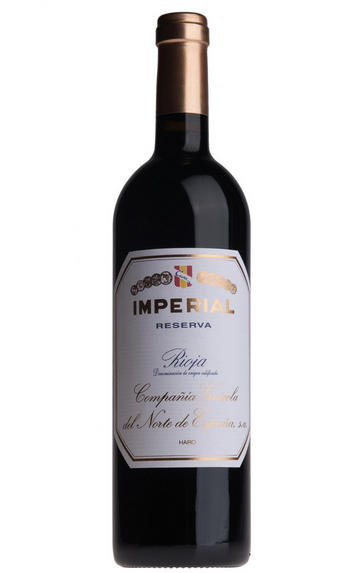
2012 Imperial, Gran Reserva, C.V.N.E., Rioja, Spain
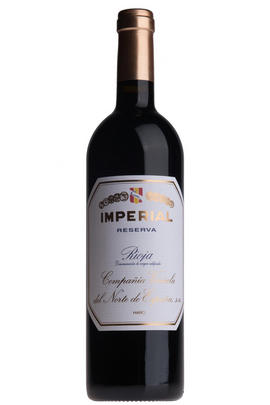
Critics reviews
Raised in new and used French and American oak barrels for two years.
Vivid ruby-red. An intensely perfumed bouquet evokes ripe raspberry, cherry cola, potpourri and exotic spices, with a suave vanilla top note and a smoky mineral flourish.
Sweet and broad in the mouth, offering lush red fruit, spice cake, mocha and coconut flavours that steadily tighten up on the back half. Finishes extremely long and spicy, with a resonating floral quality, well-knit tannins and lingering oak spice notes. This one is still quite young.
Drink 2023 - 2035
Josh Raynolds, Vinous.com (February 2019)
The wine that represents the traditional and serious reds from Haro, the 2012 Imperial Gran Reserva is a classical blend of Tempranillo with 10% Graciano and 5% Mazuelo that matured in the barrel for two years.
It has a textbook serious Haro nose, with dark spices, ripe fruit, something balsamic and a round full-bodied palate within the straight and serious style of the wine. 2012 was warm, but the wines were fresher than those from 2011. This has fine, slightly grainy tannins with a good grip. A textbook Imperial Gran Reserva.
I’ve put the wines from Viña Real and CVNE together, as they have traditionally been brands of the same winery, and even though Viña Real now has a separate winery, ownership and the winemaking team are the same. They have been extending their vineyards to use a higher percentage of their own grapes for their wines.
Drink 2019 - 2032
Luis Gutiérrez, Wine Advocate (June 2019)
The current release, the 2012 Imperial Gran Reserva, checks in as a blend of 85% Tempranillo and 10% Graciano.
Classic Rioja notes of blackcurrants, tobacco, toasted spices, balsamic, and lead pencil give way to a full-bodied, beautifully textured 2012 with ripe, supple tannins, no hard edges, and a great finish.
It's beautifully done and just a joy to drink, although I do not doubt it has another 15 years of longevity. It's not a powerhouse, but I love its elegance and finesse-driven style.
Drink 2020 - 2035
Jeb Dunnuck, JebDunnuck.com (December 2020)
About this WINE
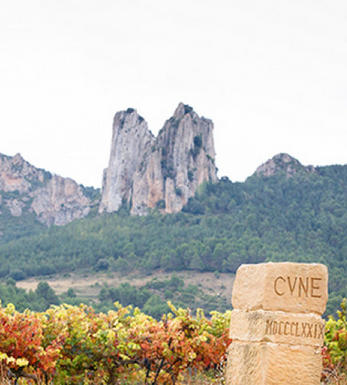
C.V.N.E.
Bodegas C.V.N.E. is still owned and run by the Real de Asua family whose ancestors established it back in 1879. Its full name is Compañía Vinicola del Norte de España but it more commonly known as "coonay".
In the late 1980s the firm built a spanking new stainless steel winery in the town of Haro and is now producing thoroughly "modern" style Rioja wines. Both red and whites are produced and their white Rioja is one of the few remaining heavily-oaked examples on the market today.
The 2 different ranges of C.V.N.E, the Vina Real and Imperial, are rich, full-bodied Riojas, with the Reservas and Grand Reservas being some of the most long-lived in the region today.
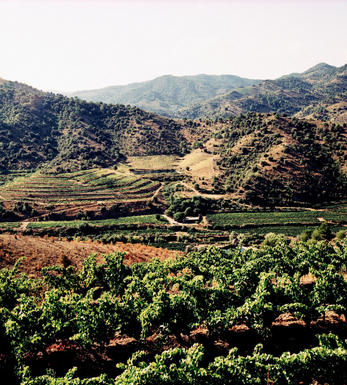
Rioja
Rioja is known primarily for its reds although it also makes white wines from the Viura and Malvasia grapes and rosés mainly from Garnacha. Most wineries (bodegas) have their own distinct red wine formula, but are normally a combination of Tempranillo, Garnacha and sometimes Graciano. Other red varieties recently approved into the Denominación de Origen Calificada (DOCa) regulations are the little-known Maturana Tinta, Maturana Parda, and Monastel (not to be confused with Monastrell). The most important of these by far is the king of native Spanish varieties, Tempranillo, which imbues the wines with complex and concentrated fruit flavours.
The Garnacha, meanwhile, bestows its wines with warm, ripe fruit and adds an alcohol punch. Graciano is an améliorateur grape (one that is added, often in small proportions, to add a little something to the final blend) and is found mainly in Reserva and Gran Reserva wines, albeit in small quantities (two to five percent), adding freshness and aroma, and enhancing the wines' ageing potential.
Crianza wines are aged for one year in oak followed by maturation for one year in bottle before being released for sale. Reservas must undergo a minimum of three years’ ageing before release, at least one of which should be in oak casks. Finally, Gran Reservas, which are only produced in the finest vintages, must spend at least five years maturing, of which at least two must be in oak.
Geographically, Rioja is divided in to three districts: Alavesa, Alta and Baja. Rioja Alavesa lies in the northwest of the La Rioja region in the Basque province of Álava. Along with Rioja Alta, it is the heartland of the Tempranillo grape. Rioja Alta, to the north-west and south of the Ebro River in the province of La Rioja, stretches as far as the city of Logroño. Elegance and poise is the hallmark of wines made here with Rioja Alta Tempranillo. Mazuelo (Carignan) is occasionally added to wines from this area to provide tannins and colour. Rioja Baja, located to the south-east, is the hottest of the three districts and specialises in Garnacha.
Rioja has witnessed a broad stylistic evolution over the years. The classic Riojas pioneered by Murrieta and Riscal in the 19thcentury were distinguished by long oak-barrel-ageing whereas the modern style, represented by Marqués de Cáceres since 1970, showcases the fruit and freshness of Tempranillo, keeping oak ageing to the legal minimum. The post-modern school that emerged in the late 1990s from producers like Palacios Remondo and Finca Allende concentrate on making wines from old vines or specific vineyard plots to accentuate the terroir, and using larger proportions of minority varietals such as Graciano.
The alta expression wines, pioneered by Finca Allende (among others) and later taken up by almost every other producer in Rioja, represent the newest flagship category in Rioja. Alongside the traditional Gran Reservas, alta expression wines are limited production and come from low-yielding vines, often from a single vineyard, and are hand-picked. Excellent examples of this style are Artadi's Pagos Viejos and El Pison.
However, modernisation has not held back the continuation of successful traditional styles as well. Happily long-established houses such La Rioja Alta, CVNE and Marques de Vargas continue to make graceful, old style wines better than ever before.
White Rioja is typically produced by the Viura grape which must comprise at least 51 percent of the blend; the rest can be made up by other, recently-authorised varieties, namely Sauvignon Blanc, Chardonnay and Verdejo, as well as the native Maturana Blanca, Tempranillo Blanco, and Turruntés (not to be mistaken for Torrontés).
Recommended Producers:
Finca Allende, Amezola de la Mora, Artadi, CVNE, Marqués de Vargas, Palacios Remondo, La Rioja Alta, Murrieta.
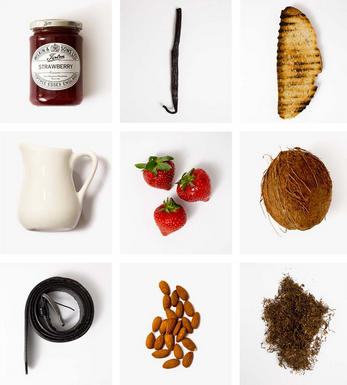
Tempranillo/Tinto Fino
A high quality red wine grape that is grown all over Spain except in the hot South - it is known as Tinto Fino in Ribera del Duero, Cencibel in La Mancha and Valdepenas and Ull de Llebre in Catalonia. Its spiritual home is in Rioja and Navarra where it constitutes around 70% of most red blends.
Tempranillo-based wines tend to have a spicy, herbal, tobacco-like character accompanied by ripe strawberry and red cherry fruits. It produces fresh, vibrantly fruit driven "jovenes" meant for drinking young. However Tempranillo really comes into its own when oak aged, as with the top Riojas where its flavours seem to harmonise perfectly with both French and American oak, producing rich, powerful and concentrated wines which can be extraordinarily long-lived.
In Ribera del Duero it generally sees less oak - the exception being Vega Sicilia where it is blended with Cabernet Sauvignon and Merlot and then aged for an astonishing 7 years in oak and is unquestionably one of the world`s greatest wines.


Buying options
Add to wishlist
Description
The nose of this wine is delightful. Incredibly gentle and beguiling, in a way that all great wines should be. There is spice and tobacco, with a hint of wood smoke. The palate is soft and velvety, with waves of complexity led by juicy plum and smooth vanilla. This will only become more enticing with age.
Drink now to 2040+
Paul Keating, Private Account Manager (November 2019)
wine at a glance
Delivery and quality guarantee